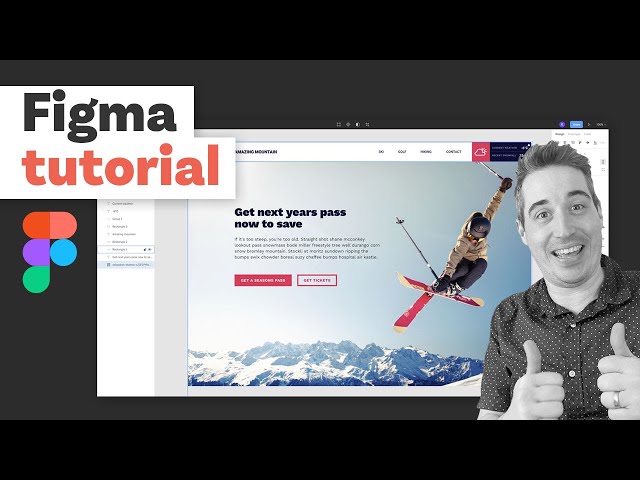1. Understand Your Audience
Before diving into the design, it’s essential to understand your target audience. Knowing their preferences, needs, and behaviors can guide your design decisions. Use Figma’s collaboration features to gather input from stakeholders and ensure that your landing page aligns with user expectations.
2. Plan Your Layout
A well-structured layout is the backbone of any successful landing page. Figma Landing Page Designer allows you to create wireframes and mockups easily. Start by sketching a rough layout, focusing on the following elements:
- Header: Includes the logo, navigation, and a compelling headline.
- Hero Section: The main visual and call-to-action (CTA).
- Benefits/Features: Highlight what makes your product or service unique.
- Social Proof: Testimonials, reviews, and case studies.
- Footer: Contact information and additional links.
Figma’s frame tool can help you organize these sections effectively.
3. Use High-Quality Visuals
Visuals play a significant role in engaging visitors. Use high-resolution images, videos, and illustrations that resonate with your audience. Figma supports various image formats and allows you to integrate with other tools like Unsplash for free images.
Tip: Use Figma’s vector tools to create custom illustrations that match your brand’s style.
4. Create a Strong Visual Hierarchy
A clear visual hierarchy ensures that visitors can easily navigate your landing page and find important information. Use Figma’s text styles and grid systems to establish a consistent hierarchy. Here’s how:
- Headings: Use larger fonts and bold weights for headings.
- Subheadings: Slightly smaller and less prominent than main headings.
- Body Text: Easy-to-read font size and line spacing.
- CTAs: Make them stand out with contrasting colors and bold text.
5. Incorporate Interactive Elements
Interactive elements can significantly enhance user engagement. Figma’s prototyping features allow you to add interactions and animations to your design. For instance, you can create hover effects for buttons, scroll animations, and modal pop-ups.
Tip: Keep interactions subtle and purposeful to avoid overwhelming users.
6. Optimize for Mobile
With an increasing number of users accessing websites via mobile devices, optimizing your landing page for mobile is crucial. Figma allows you to design responsive layouts and preview your designs on different screen sizes. Use constraints and auto-layout features to ensure your design adapts well to various devices.
7. Test and Iterate
Testing your landing page design is vital to identify areas for improvement. Use Figma’s collaboration features to gather feedback from team members and stakeholders. Additionally, you can use tools like Maze to conduct usability testing directly from your Figma prototypes.
Tip: Iterate on your design based on feedback and testing results to enhance user experience continuously.
8. Utilize Figma Plugins
Figma offers a wide range of plugins that can streamline your design process. Some useful plugins for landing page design include:
- Content Reel: For generating placeholder text and images.
- Unsplash: For integrating high-quality, free images.
- Figmotion: For adding complex animations.
- Stark: For checking accessibility and ensuring your design is inclusive.
9. Collaborate Effectively
Figma’s real-time collaboration feature allows multiple designers to work on the same file simultaneously. This feature is particularly useful for teams, enabling seamless collaboration and quicker design iterations. Use comments to leave feedback and suggestions directly on the design.
10. Maintain Consistency with Design Systems
Consistency is key to a professional and cohesive landing page. Use Figma’s design system features to maintain consistency in colors, typography, and components. Create reusable components for buttons, forms, and other UI elements to ensure uniformity across your design.
Conclusion
Creating an engaging landing page with Figma is a blend of strategic planning, creative design, and iterative testing. By understanding your audience, planning your layout, using high-quality visuals, and incorporating interactive elements, you can design a landing page that not only looks great but also drives conversions. Utilize Figma’s powerful features and plugins to streamline your design process and collaborate effectively with your team.
Remember, the key to a successful landing page is continuous improvement. Regularly test and iterate on your design based on user feedback to achieve the best results. With these tips and Figma’s robust capabilities, you can become an expert Figma Landing Page Designer and create landing pages that truly engage and convert.










